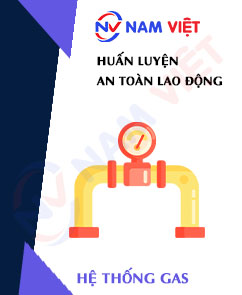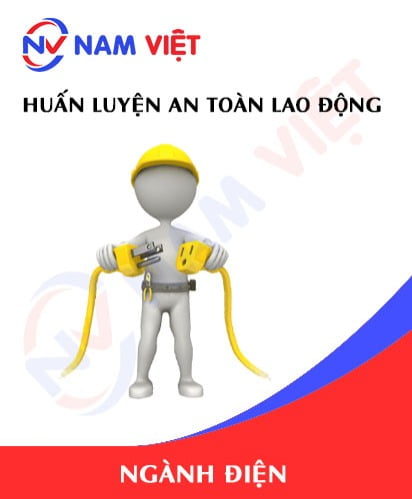Occupational Safety Training for Operating Gas Systems
99,000 ₫
Note: The above price is calculated per person and may vary depending on the number of trainees participating in the course and market fluctuations. For more accurate pricing support, please refer to the pricing list or contact our consulting staff directly.
Occupational safety is an important issue when operating gas systems and needs to be addressed promptly to ensure the health and safety of workers and enhance the reputation of businesses here. The Occupational Safety Training is one of the effective solutions to raise awareness on how to prevent occupational accidents for workers operating gas systems.
Table of Contents
Toggle1. Overview of the Gas System
a. What is a Gas System?
The gas system is a system designed to transport, store, and use various types of gases, including natural gas, fuel gas, liquefied gases (such as propane and butane), or other gases like noble gases. The gas system usually consists of components such as storage tanks, pipelines, valves, safety devices, and controllers to ensure safety and efficiency during operation.
The applications of gas systems are diverse, ranging from supplying energy to households and businesses, industrial use, chemical, medical sectors, to scientific research and space applications.
Some main components of the gas system include:
- Storage Tanks: These are places where gas is stored under high pressure. Storage tanks are usually made of steel or light alloys and designed to withstand high pressure without leaking.
- Pipelines: Pipes that convey gas from the storage tanks to gas-using devices, such as gas stoves or ovens. They are typically made from pressure-resistant and heat-resistant materials like stainless steel or copper.
- Valves and Safety Devices: Valves are used to control gas flow and ensure system safety. Safety devices include pressure sensors, overpressure protection valves, and flame detectors.
- Controllers: Controllers and pressure regulators are used to control gas flow and maintain stable pressure within the system.
Most importantly, the operation and maintenance of the gas system must be carried out carefully to ensure the safety of people and surrounding property. Everyone must follow safety instructions and conduct regular inspections to ensure the gas system operates correctly and does not pose any risks.

b. Operating Principles of the Gas System
The gas system operates based on basic principles of pressure and gas flow. Below are some basic principles of the gas system operation:
- Pressure: In the gas system, gas is stored in storage tanks under high pressure. The pressure is created by gas compressed and loaded into the tank. When a valve is opened, the high pressure generates gas flow from the tank to gas-using devices.
- Gas Flow: Gas moves from high-pressure areas to low-pressure areas. When the valve is opened, the high pressure in the tank causes gas to flow out through the pipes to the devices.
- Pressure Control: The gas system needs devices to control pressure, such as valves, pressure regulators, and controllers, to ensure the system pressure remains stable and safe.
- Safety and Protection: The gas system must be equipped with safety devices such as overpressure protection valves, flame sensors, and emergency shut-off valves to prevent hazardous situations like gas leaks or explosions.
- Gas Usage: Gas from the system is used in devices like gas stoves, ovens, heaters, and other equipment. When the valve opens, gas flows through the pipelines to these devices to be burned or used for other purposes.
c. Industries that Commonly Work with Gas Systems
- Energy Industry: In the energy sector, gas systems are widely used to supply energy to households, businesses, and production facilities. Natural gas is often used as a clean and efficient energy source.
- Industrial Sector: Industrial enterprises use gas systems for various purposes, including production processes, processing, and operating machinery. Gas is used in processes like welding, cutting, heating, cooling, and chemical reactions.
- Chemical Industry: In the chemical sector, gas systems supply raw materials and energy for chemical production processes. Various gases are used in chemical reactions to produce final products.
- Medical Sector: In healthcare, medical gases like oxygen and nitrogen are commonly used in medical devices such as respiratory support systems, surgical machines, and patient care equipment.
- Food and Beverage Industry: In food and beverage, gas systems provide heat for cooking, processing, and preserving food. Gases like propane and butane are often used in devices such as ovens and stoves.
- Oil Drilling and Industrial Mining: In oil drilling and industrial extraction, gas systems supply energy to equipment and production processes at drilling sites and energy stations.

2. Overview of Occupational Safety Training for Gas System Operation
a. What is Occupational Safety Training?
- Occupational safety training for gas system operation consists of sessions that equip workers with awareness on preventing occupational accidents. Workers directly involved with gas systems belong to Group 3.
- This training helps workers identify and avoid hazards, reducing risks of occupational accidents during work.
REGISTER FOR OCCUPATIONAL SAFETY TRAINING SERVICE
b. Training Duration
Initial safety training duration:
- The total training time is at least 24 hours, including testing time.
- 8 hours of theoretical study on safety policies and labor hygiene laws
- 8 hours of theoretical study on basic knowledge of occupational safety and hygiene
- 4 hours of theoretical study on specialized training content
- 2 hours of practical training on specialized content
- 2 hours of theoretical examination at the end of the training course
The safety training center will schedule training sessions based on workers’ availability. Usually, there are 6 training sessions over 3 days, provided the company can arrange continuous study time.
Periodic safety training duration:
- Before the occupational safety card expires, workers who want to renew it must undergo periodic occupational safety training, with the periodic training duration at least 50% of the initial safety training duration.
Explanation: The total periodic occupational safety training time is at least 12 hours, including testing. Upon completing periodic training and passing the test, workers will be reissued or have their occupational safety cards extended.
c. Training Content
| No. | TRAINING CONTENT | TRAINING DURATION (HOURS) | |||
| Total | Including | ||||
| Theory | Practice | Exam | |||
| I | System of policies and laws on occupational safety and hygiene | 8 | 8 | 0 | 0 |
| 1 | Overview of legal documents system on occupational safety and hygiene. | 6 | 6 | ||
| 2 | System of standards and technical regulations on occupational safety and hygiene. | 1 | 1 | ||
| 3 | Specific regulations of state management agencies on occupational safety and hygiene when building new, expanding, or renovating works and facilities to produce, use, preserve, store, and inspect machines, equipment, materials, and substances requiring strict occupational safety and hygiene. | 1 | 1 | ||
| II | Basic knowledge of occupational safety and hygiene | 8 | 8 | 0 | 0 |
| 1 | Basic knowledge of hazardous and harmful factors at the workplace. | 4 | 4 | ||
| 2 | Methods to improve working conditions. | 1 | 1 | ||
| 3 | Safety culture in production and business. | 1 | 1 | ||
| 4 | Rights and obligations of employers and employees; policies on occupational safety and hygiene for workers; roles and responsibilities of safety and hygiene network members. | 1 | 1 | ||
| 5 | Safety and hygiene regulations, signs, safety and hygiene instructions, use of safety equipment and personal protective equipment; accident first aid skills, occupational disease prevention. | 1 | 1 | ||
| III | Specialized training content | 6 | 4 | 2 | 0 |
| Comprehensive knowledge about machines, equipment, hazardous substances; risk analysis, evaluation, and management of occupational safety and hygiene; safe working procedures with machines, equipment, and substances requiring strict occupational safety and hygiene. | 6 | 4 | 2 | ||
| IV | Final occupational safety training examination | 2 | 2 | 0 | 0 |
| Total | 24 | 22 | 2 | ||
See more about training content of all 6 groups
d. Occupational Safety Card
After completing the occupational safety training and passing the test, workers will be issued an occupational safety card (commonly called the occupational safety certificate for Group 3).
The Group 3 safety card clearly shows information such as: full name, date of birth, job and specific working environment. It also includes training duration, red stamp, and signature confirming training completion.
According to the regulations on card issuance stated in Clause 2 of Article 24 of Decree 44/2016/ND-CP, there are two cases:
- If the employer and employee have a labor contract, the employer must sign, stamp, and endorse the safety card for the Group 3 trained worker after the training course and passing the test from the occupational safety training unit.
- If the worker is freelance, seasonal, and does not have a labor contract, the training unit must sign, stamp, and endorse the safety card for the worker after training and passing the test.

3. Hazards for Workers When Operating Gas Systems
- Gas Leak: Gas leaks from the gas system can create a toxic and dangerous working environment. Gases such as natural gas, propane, and butane can explode or cause fire hazards if leaked and exposed to flames or sparks.
- Asphyxiation: Certain gases like carbon monoxide (CO) can cause the risk of asphyxiation if their concentration in the air exceeds safe limits. Asphyxiation can lead to serious health issues or even death.
- Fire and Explosion: Natural gas, propane, butane, and other gases can create explosive atmospheres if dispersed in the air and exposed to flames or sparks. Fires and explosions can cause severe injuries, property damage, and fatalities.
- Toxic Poisoning: Toxic gases such as sulfur dioxide (SO2) and ammonia (NH3) can pose poisoning risks when inhaled. Long-term exposure to these toxic gases can cause serious health problems and bodily harm.
- High Pressure: Gas systems often operate under high pressure. Handling gas cylinders or equipment under high pressure without proper technique can result in serious accidents or injuries.
- Lack of Safety Awareness: A lack of safety awareness when working with gas systems, including not following safety rules and not using appropriate protective equipment, can create serious accident risks.
4. Measures to Control Occupational Accidents When Operating Gas Systems
- Training and Instruction: All workers need to be trained in safety when working with gas systems. Training should include safety rules, accident prevention measures, recognizing danger signs, and proper use of protective equipment.
- Inspection and Maintenance: Gas systems must be regularly inspected and maintained to ensure all components operate properly and safely. This includes pressure checks, leak inspections, and replacing damaged parts.
- Use of Protective Equipment: All workers should use protective gear such as safety goggles, gloves, and protective clothing when working with gas systems. Additionally, masks or air filters should be used when necessary.
- Leak Control: Leak control measures include using heat-resistant sealants, tightening valves, and regularly checking to detect and repair dangerous leaks.
- Temperature and Fire Control: Limit the use of gas systems near flames or sparks. Additionally, control the temperature around gas systems to prevent fire and explosion risks.
- Isolation and Gas Regulation: Work areas with gas systems should be isolated from high-risk areas and have gas regulation measures to ensure air circulation and safety.
- Planning and Emergency Response: Plan and train staff on responses to incidents such as gas leaks, fires, explosions, or asphyxiation risks. Ensure everyone in the area knows how to respond safely and effectively in emergencies.
- Periodic Inspection of gas systems to detect early safety issues such as damage, wear, or mechanical failures on equipment, thereby reducing occupational accident risks.

5. Benefits of Occupational Safety Training
An Toàn Nam Việt offers your business the following great benefits after completing occupational safety training courses as regulated by Decree 44/2016/ND-CP on occupational safety and hygiene, applicable to companies, factories, and enterprises.
- Workers can recognize potential occupational accident hazards and take preventive measures to avoid accidents.
- Your business can establish risk prevention measures in production, operation, and maintenance processes.
- Reduce costs arising from potential occupational safety incidents.
- Uninterrupted production helps increase labor productivity and product quality.
- Comply with occupational safety laws, avoiding legal risks.
- Create credibility and professionalism in all aspects, thereby elevating your business brand.
Nam Việt’s training courses are the solution to prevent external risk factors affecting individuals, helping them avoid dangers that could lead to injury or even death.
REGISTER FOR OCCUPATIONAL SAFETY TRAINING SERVICE
6. Customer Feedback After Completing the Training Course
An Toàn Nam Việt has many years of experience accompanying numerous businesses in Vietnam, especially in southern provinces. This responsibility is very valuable to Nam Việt, which is why our Occupational Safety Training is increasingly professional. The motivation for An Toàn Nam Việt’s growth comes from positive feedback and suggestions from businesses. Below are testimonials from our valued partners.
Hoa Dat Construction and Trading Joint Stock Company
“Nam Việt’s service helped us greatly simplify occupational safety and complete safety documentation for work processes. The consulting team was enthusiastic and timely in answering our questions. 5 stars for Nam Việt.”
See more customer interviews after using An Toàn Nam Việt’s services
7. An Toàn Nam Việt’s Occupational Safety Training Capacity
An Toàn Nam Việt is a reputable and quality occupational safety training center in Vietnam today. Our training sessions take place continuously at production workshops, factories, or construction sites nationwide (63 provinces in Vietnam).
REGISTER FOR OCCUPATIONAL SAFETY TRAINING SERVICE
Occupational Safety Training License
- An Toàn Nam Việt has been inspected and certified by the Department of Safety under the Ministry of Labor, War Invalids and Social Affairs, confirming our qualification to conduct occupational safety and hygiene training. This further strengthens our capability in occupational safety training.

Materials and Lectures
- Before the occupational safety training materials are included in ATLĐ courses, they are reviewed and approved to ensure accuracy and effectiveness.
- Our lecturers’ teaching methods are standardized according to An Toàn Nam Việt standards, developed by experts in occupational safety and hygiene training to maximize learners’ knowledge absorption.
Facilities
- Controlling factors in the classroom environment enhances teaching efficiency and learners’ knowledge absorption.
- Our training facility provides spacious classrooms that meet standards for area, lighting, and training equipment.
8. A Nationwide Reputable Occupational Safety Training Center
At An Toàn Nam Việt, we prioritize occupational safety training with great dedication. For us, imparting self-protection knowledge to workers equips them with safety tools on their livelihood journey, contributing to national development.
To ensure effective training, we meticulously prepare every detail, from tools and teaching equipment to curricula, materials, audio, and lighting.
Our occupational safety trainers are experts with many years of experience, some even having research projects identifying hazards across industries and how to prevent them.
Lectures are based on practical experience and conveyed in a vivid, easy-to-understand manner for workers. These factors help learners feel comfortable during training and absorb knowledge well. The content strictly complies with Decree 44/2016/ND-CP.
Thus, workers learn many prevention methods and self-protection techniques, and apply them appropriately in their work.
Our training center is proud to provide reputable, professional occupational safety training services with these advantages:
- Competitive training costs while maintaining quality.
- Flexible training schedules tailored to company production situations.
- Fast and lawful procedures for issuing occupational safety training certificates.
- Experienced and skilled instructors.
- Classrooms controlled to optimize teaching efficiency and knowledge absorption.
- Training materials tailored to occupational safety work in enterprises.
- An Toàn Nam Việt works dedicatedly and professionally to provide customers with precise and prompt support.

9. Additional Occupational Safety Training Materials
- Occupational Safety Materials for Operating Gas Systems
- Occupational Safety Training Material Set
- Occupational Safety Training Test Set
- Multiple Choice Safety Test for Operating Gas Systems
- Training Slides for Occupational Safety When Operating Gas Systems
No comments yet















Review Occupational Safety Training for Operating Gas Systems
There are no reviews yet.